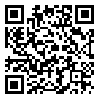Volume 30, Issue 194 (2-2021)
J Mazandaran Univ Med Sci 2021, 30(194): 11-22 |
Back to browse issues page
Abstract: (1225 Views)
Background and purpose: Apoptosis is a protective cellular process that plays an important role in the development and homeostasis of natural tissues as well as disease-causing factors. Current study aimed at determining the effect of aerobic training, Vitamin D, and injection of adipose tissue-derived stem cells (ADSCs) on some apoptotic and anti-apoptotic indices of beta-pancreatic cells of streptozotocin (STZ) induced diabetic rats.
Materials and methods: In an experimental study, 80rats (220-240g, 8 weeks old) were randomly divided into 10 groups: Control, Sham, diabetics, ADSCs, exercise, Vitamin D, ADSCs +exercise, ADSCs +Vitamin D, exercise+ Vitamin D, and ADSCs +exercise+ Vitamin D. The exercise protocol included treadmill running at 60-70% VO2max for 5 days a week/ 6 weeks. In ADSCs receiver groups, human ADSCs (1.5*106 PBS/5mL) were injected to the tail vein. Diabetes was induced by intraperitoneal injection of streptozotocin (60mg/kg) dissolved in citrate buffer, pH 4.5. Bax and Bcl2 values of beta pancreatic cells were measured following homogenization and centrifugation using ELISA. Data analysis was done applying one way analysis of variance and Tukey test.
Results: Significant differences were seen between the levels of Bax and Bcl2a well as the ratio of Bcl-2/Bax between diabetic group and control group and diabetic group and other groups (P=0.001). But, there were no significant differences between other groups (P=0.001).
Conclusion: It seems that all interventions, especially their combination, can have an increasing effect on Bcl2 values and decrease Bax values and the ratio of beta-pancreatic cells. So, they can be used as a Bax pharmacological method to reduce hyperglycemia-induced apoptosis on beta cells.
Materials and methods: In an experimental study, 80rats (220-240g, 8 weeks old) were randomly divided into 10 groups: Control, Sham, diabetics, ADSCs, exercise, Vitamin D, ADSCs +exercise, ADSCs +Vitamin D, exercise+ Vitamin D, and ADSCs +exercise+ Vitamin D. The exercise protocol included treadmill running at 60-70% VO2max for 5 days a week/ 6 weeks. In ADSCs receiver groups, human ADSCs (1.5*106 PBS/5mL) were injected to the tail vein. Diabetes was induced by intraperitoneal injection of streptozotocin (60mg/kg) dissolved in citrate buffer, pH 4.5. Bax and Bcl2 values of beta pancreatic cells were measured following homogenization and centrifugation using ELISA. Data analysis was done applying one way analysis of variance and Tukey test.
Results: Significant differences were seen between the levels of Bax and Bcl2a well as the ratio of Bcl-2/Bax between diabetic group and control group and diabetic group and other groups (P=0.001). But, there were no significant differences between other groups (P=0.001).
Conclusion: It seems that all interventions, especially their combination, can have an increasing effect on Bcl2 values and decrease Bax values and the ratio of beta-pancreatic cells. So, they can be used as a Bax pharmacological method to reduce hyperglycemia-induced apoptosis on beta cells.
Keywords: progressive aerobic training, Adipose-derived stem cells, beta pancreatic cells, streptozotocin, Vitamin D
Type of Study: Research(Original) |
Subject:
Sports biomechanics
| Rights and permissions | |
 |
This work is licensed under a Creative Commons Attribution-NonCommercial 4.0 International License. |



